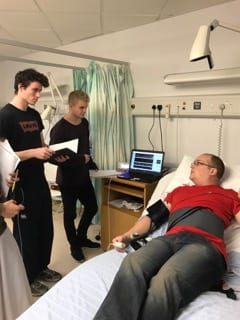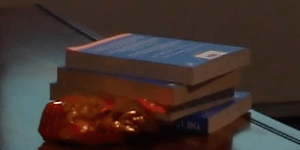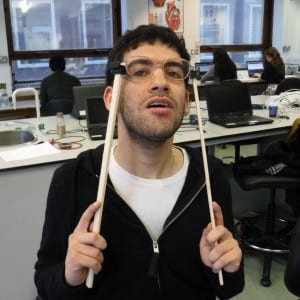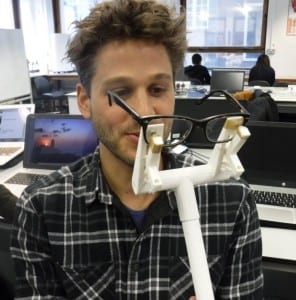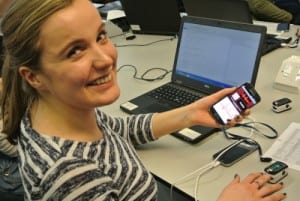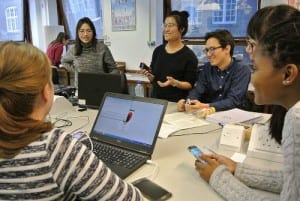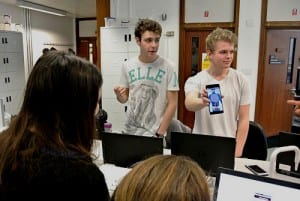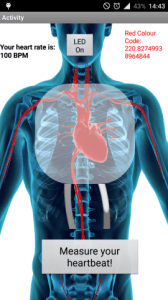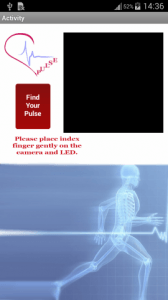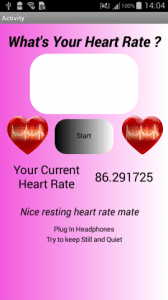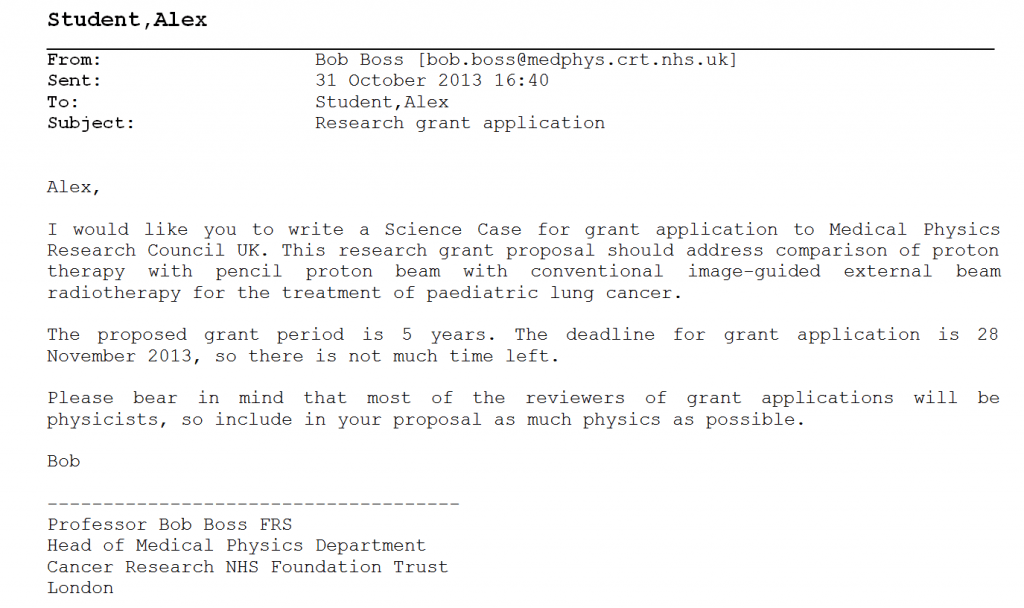How do you demonstrate gamma imaging practically to students, without a radiation hazard?
By rmapapg, on 10 January 2017
By Rebecca Yerworth
This was the challenge set to 3rd year project student Nicola Wolf. The outcome? Gamma Anna, and a paper in Physics Education. The interactive demonstration that Nicola developed is applicable to medical students, secondary school lessons, and younger children when used with an appropriate age specific work sheet.
What is Gamma Imaging? It is a medical diagnostic technique which involves injecting small amount of radioactive material (tracer) in to a patient and looking to see where it goes using a radiation detector, known as a gamma camera. The tracer is designed to be selectively absorbed into tissues of interest – e.g. radioactive glucose will accumulate in those parts of the body that are using the most energy…. Tumours have a high energy demand, so they will show up bright in the image. This is a useful tool for doctors if they want to see if a cancer has spread.
Why produce a teaching demo? It is common knowledge that well designed interactive activities increase understanding of the subject and retention of knowledge, as well as student engagement and enjoyment. However you can’t safely demonstrate real gamma imaging to students, because of the radiation hazard, quite apart from the logistics: Gamma cameras are large (room sized) and expensive. The Gamma Anna demo uses a series of analogies to explained key concepts of the imaging technique: heat, from an exothermic reaction represents the gamma radiation; tumours are represented by plaster of Paris; saline the radioactive tracer and a thermal imaging camera represents the Gamma camera. ‘Anna’ herself is a ragdoll into which the ‘tumours’ can be placed.
Who is the demo for? Nicola tested the demo with GCSE grade students, where it served to explain principles of radiation and showed applications of physics to medicine and engineering – a topic with the potential to motivate students, including girls, to choose STEM subjects at A’ level and beyond. She also tested it with medical students, where the focus was on improving their ability to accurately advise future patients. Gamma Anna could also be used with younger children, either at an outreach event or as play-therapy if they, or a relative, need to undergo gamma imaging. In each case age/course appropriate work sheets should be used; examples are available for download from the link above.
In conclusion… Gamma Anna is cheap, safe and easy to make and use. The largest expense being a thermal imaging camera, but mobile phone adapters are suitable, can be bought for less than £200, and are a useful resource for other demos too.
 Close
Close



